
Pop, pop, pop, a hundred kernels in a hot pot.
If a bowl of perfectly popped popcorn with a hint of butter and a dash of salt sounds delicious, now is the chance to run to the store for supplies, or take a rummage in the back of your pantry. But, I guarantee it can’t compete with the homegrown kind.
Especially not microwave popcorn. That you should avoid at all costs.
As with all things gardening, you’re going to have to sow your popcorn seeds long before the movie starts.
In fact, about 90-120 days before you allow the craving for popcorn to set in.
Sowing Popcorn Seeds
Like sweetcorn, you’ll want to start sowing popcorn (Zea mays var. everta) seeds in late spring, as soon as the soil is warm enough. About 65°F (18°C) is sufficient. Waiting for warmer soil will be okay as long as you account for being able to harvest before the first frost.
If you sow seeds in cool soil, they are more likely to rot or be stolen by rodents, before they have a chance to emerge.
You can sow your popcorn seeds all at once, or wait 2-3 weeks between planting.
The latter is recommended if the weather is unstable. At the same time, it will give you peace of mind that either batch will produce some tasty kernels.
If you hit the jackpot, they’ll both grow and dry to perfection.
Just like corn, the seeds must be direct sown in the soil. No transplanting is allowed.
Overall, popcorn needs plenty of moisture and warmth from the time of germination to flowering.
Planting Depth of Popcorn Seeds
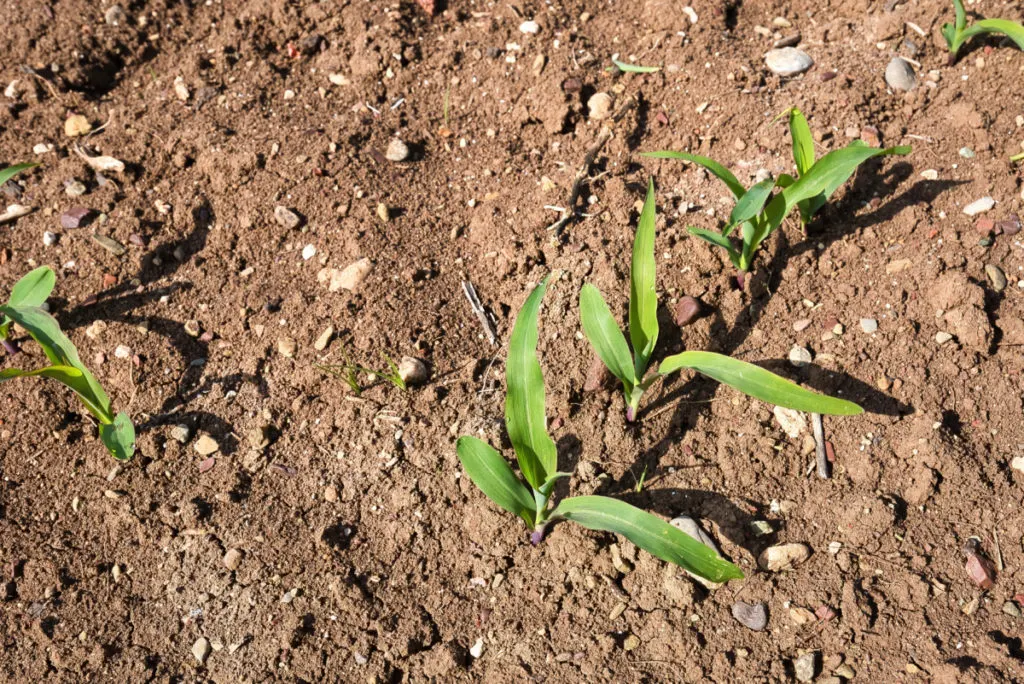
Here’s where you get to throw the planting rule of thumb on the compost pile: two times the width, or diameter, of the seed.
For popcorn, you’re going to want to go a bit deeper than that.
Sow your popcorn seeds 1″ deep in heavy soils, 2″ deep in sandier soils.
Also, keep in mind that planting in blocks is better than planting in long rows. As corn is pollinated by the wind, it increases the chance of success if the individual plants are closer together.
Plant popcorn in at least 4 (short or long) rows, with seeds 8″ apart.
Rows should be 18-24″ apart.
Related reading: Plant Spacing – 30 Vegetables & Their Spacing Requirements
What Kind of Soil Does Popcorn Like?
Popcorn is a heavy feeder that needs some additional support to grow.
No, not by way of staking it, though high winds can flatten it once it reaches maturity, but that’s not what we are talking about here.
Because popcorn has shallow roots, it is good advice to apply organic matter/compost before planting. This ensures that it can reach the extra nutrients it needs, such as nitrogen and phosphorus.
Well-rotted manure is best to add in early spring or in fall before you close your garden for the winter. Never use raw manure, as it can contain bacteria that you don’t need around your growing fruits and vegetables.
Preventing Cross-Pollination With Other Varieties of Corn Growing Nearby
All types of corn readily cross-pollinate. The wind makes sure of that.
So, if you are growing sweetcorn alongside your popcorn, chances are good that your popping corn won’t pop all that well.
And vice versa. If the wind sweeps up the pollen from the popcorn flowers and it lands on your sweetcorn, goodbye sweetness.
2 Ways to Prevent Cross-Pollination Between Corn
To harvest popcorn that is true-to-type, you’ll want to make sure that your popcorn isn’t flowering at the same time as other varieties.
You can accomplish this by creating large distances between blocks of corn. However, many of us don’t have the garden space to do this.
Another tactic is to first sow your popcorn seeds, then wait 3 weeks to sow your other flint and sweetcorn seeds. Don’t forget to plant a block of glass gem corn.
Remember that popcorn has a long amount of days to maturity. Whatever tactic you choose, be sure that it gets in the ground first.
Or, you could choose to only grow popcorn. In that way, you won’t need to worry about planting times or cross-pollination. With a huge bowl of salty popcorn in sight, it seems the simplest way to go.
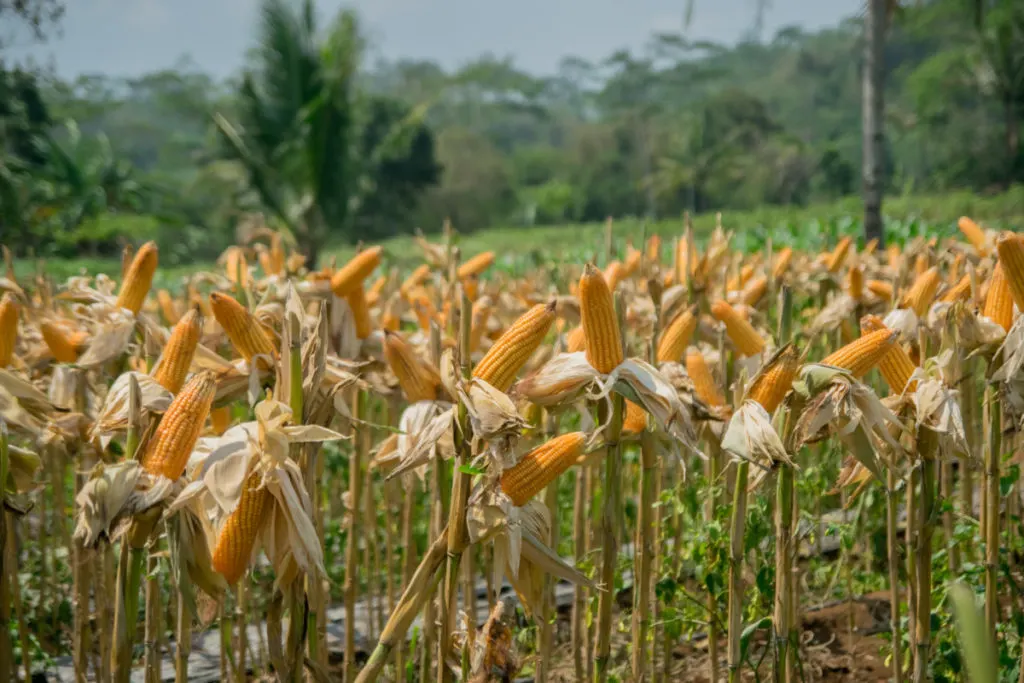
Keeping Your Popcorn Patch Weed-Free
Normally I don’t mind a few weeds in the garden, as many of them are edible. It’s like having food for free. You don’t have to plant it, it grows come rain or shine and you can remove it anytime you want.
See, nature is always providing both food and medicine. That is, if we know where and when to look.
In the case of popcorn, weeding around the base of the growing stalk is a chore that you just have to do.
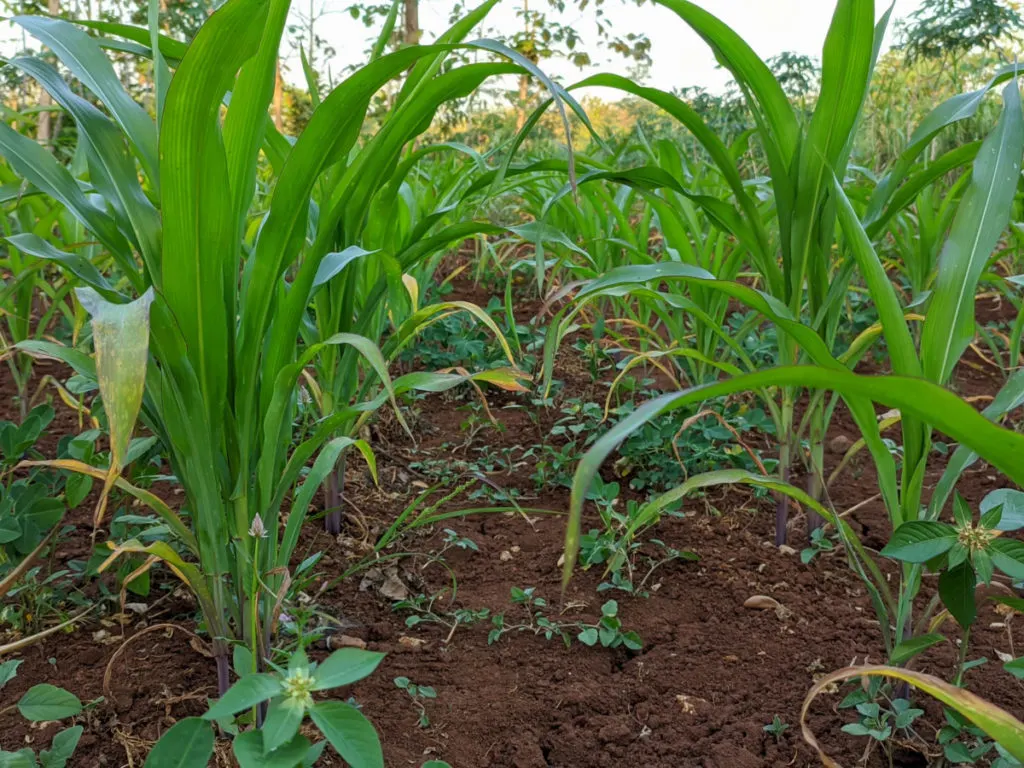
Weeding by hand when the invasive greens are small, is easy enough. Use a small hoe if the weeds get out of hand.
Once the corn grows to a sufficient size, no further work will be necessary until harvest time.
Problems with Growing Popcorn
Many of us dream of putting seeds in the soil and letting them magically grow to full size – with no intervention from us. In an ideal world the rain will gently water the land (sometimes it hails and pounds) and the sun will shine with brilliance (to the tune of scorching rays of 100-proof sun).
A golden middle, to match the sheen of the common kernel would be nice, yet, it isn’t what we always get.
Though, if we are aware of the challenges before we toss random seeds into our backyard gardens, we can be ready to tackle any situation that arises.
Getting Enough Water
Popcorn, like lettuce and most other garden crops, enjoys regular watering.
Stress does no good for the final pop.
About 1″ a week of water is what your popcorn would like to receive. If you have sandy soils, you’ll likely need to water more often than this.
Later in the season, once the ears have filled in and matured, you can stop watering altogether. This way, the kernels can dry out faster for storage. And of course, for popping.
Related Reading: 10 Watering Mistakes That Harm Your Plants & How To Use Water More Wisely
Popcorn Pests and Diseases
When all is said and done, popcorn isn’t really all that hard to grow. Give it enough nutrients, water it and let it shine.
However, you still need to watch out for some insects who may also be interested in your crop. Namely corn earworms and corn borers. While chemical control options are out there, growing corn organically will provide you with the healthiest crop.
A couple of diseases to watch out for are leaf rust and smut.
Leaf rust is caused by a fungus that leaves spots or streaks on the leaves of the plant. Choosing a rust-resistant variety is highly recommended.
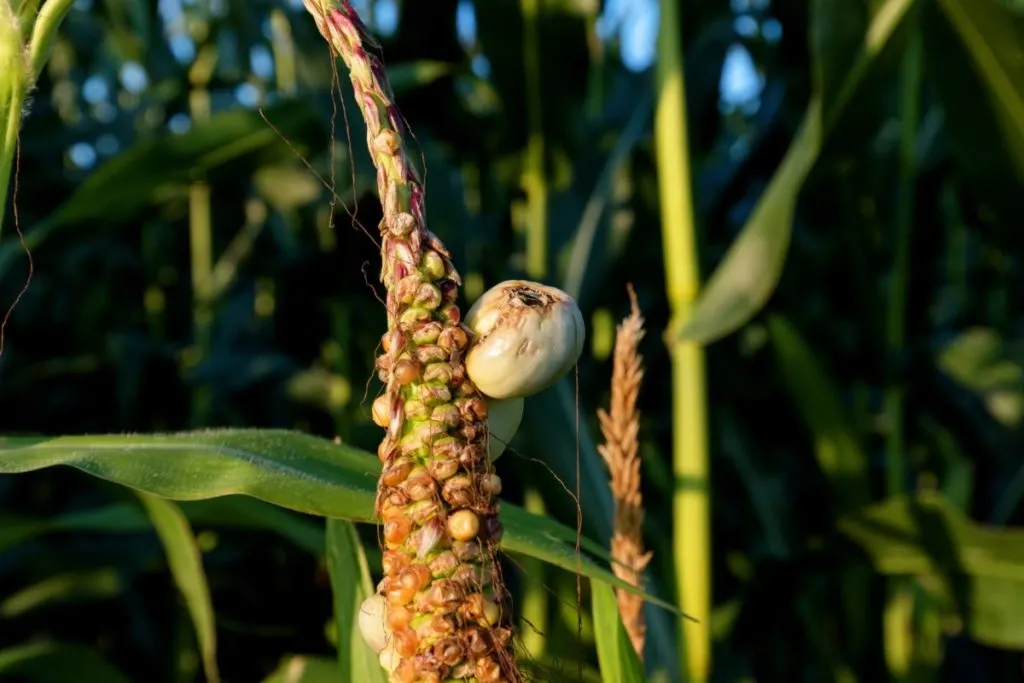
Corn smut is also caused by a fungus. It forms galls that appear on the leaves, stems, ears and tassels. You can rid the plant of the galls, removing them by hand before they release their spores. Do not compost them.
As the seedlings emerge, watch out for thieving birds. And as the ears ripen, be aware that raccoons also enjoy unpopped popcorn. Maybe even more than you do.
Harvesting Popcorn
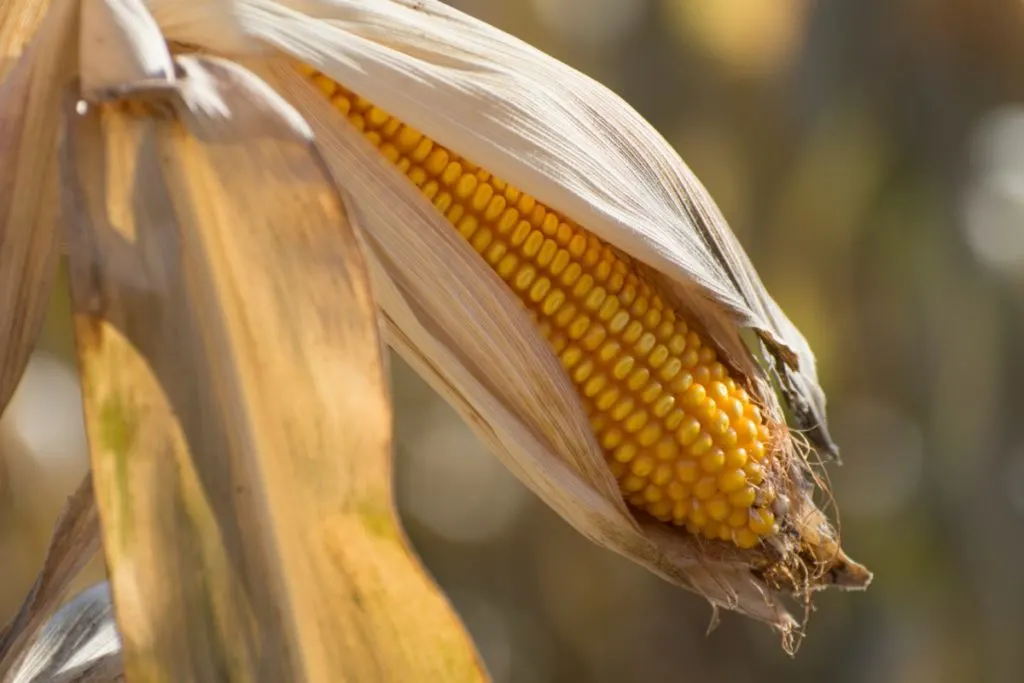
How do you know when your popcorn is ready to harvest?
Well, first of all, there are the “days to maturity” listed on the seed package.
But, that’s using more of your brain, rather than your intuition.
The best way to know if your popcorn is ready to harvest is to take a peek under the husks.
If the kernels contain too much moisture, they will not pop.
What you are looking for is nice, shiny, dry kernels to harvest.
Break off the entire ear, remove the husks and store the cobs in a safe, dry place for about a month. Only then can you remove the kernels from the cobs.
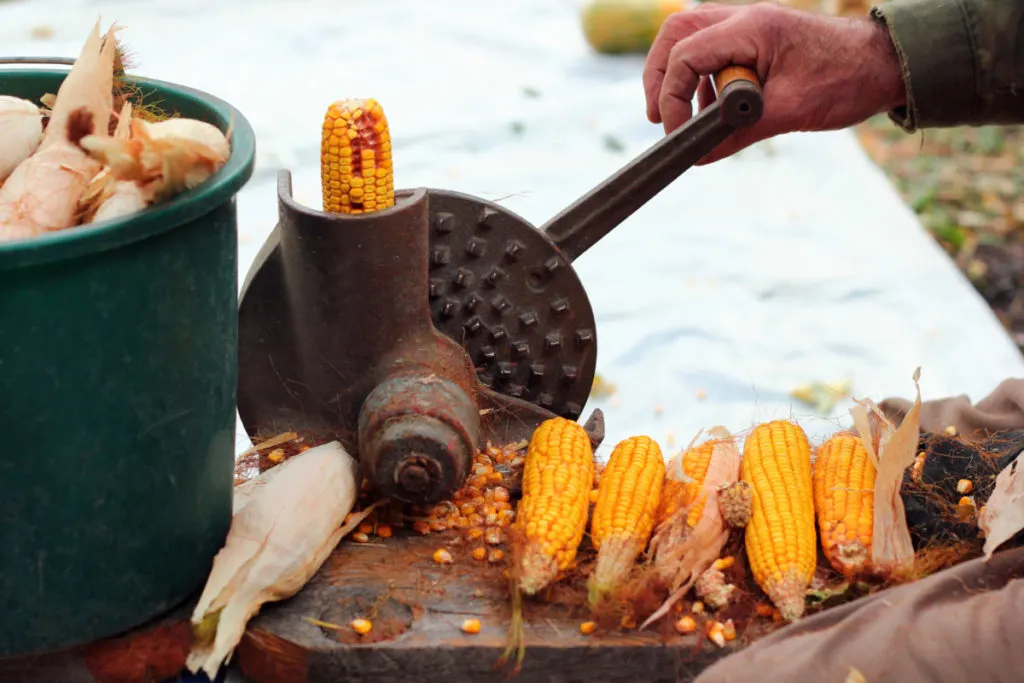
Naturally, the dry kernels can be removed by hand, which is actually fun work. Or you can opt for a corn sheller. This comes in handy if you have a bumper crop of corn.
Storing Your Homegrown Popcorn
Popcorn kernels can be stored on the cob. Or they can be shelled and stored in an airtight container.
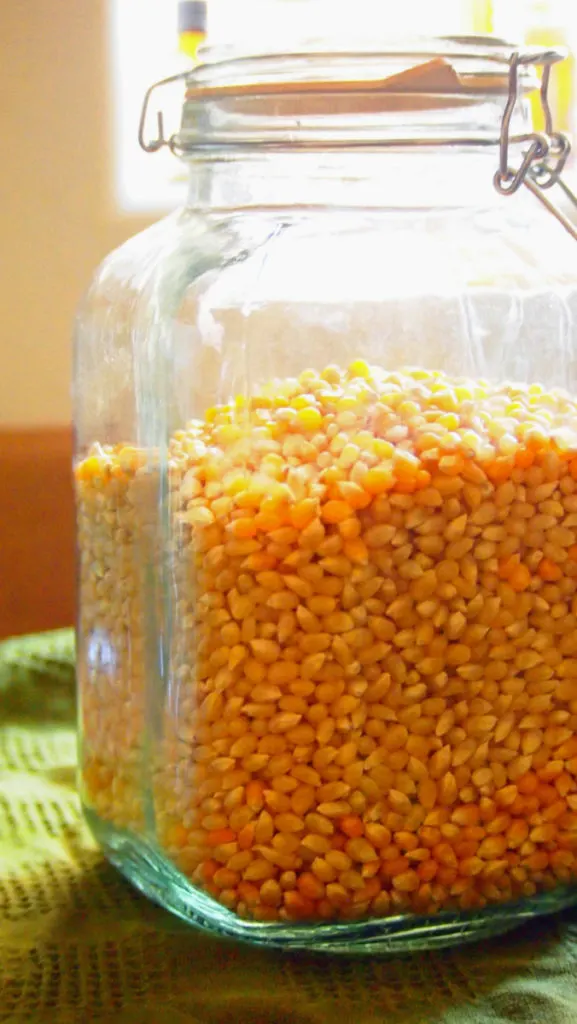
Replenish your popcorn supply every year. If a single harvest will last that long – it never does in our home.
Varieties of Popcorn Worth Growing
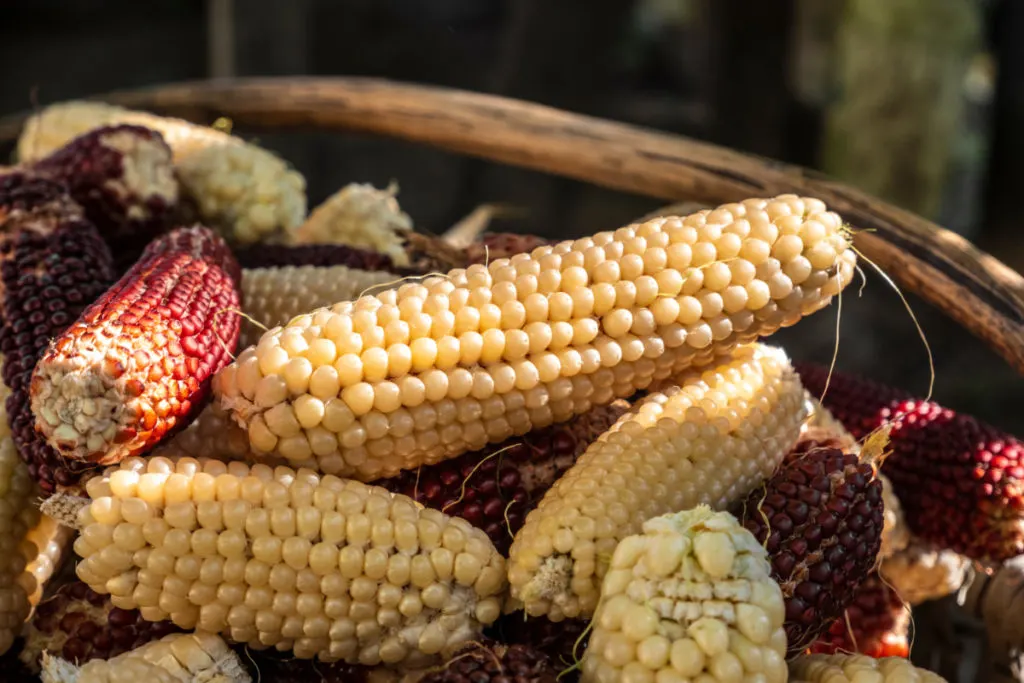
Lucky for us popcorn lovers, there is more than one variety of popcorn to grow. Each has its own special characteristics, mainly in appearance. Though you’ll also find differences in texture and crunch too.
Strawberry Popcorn
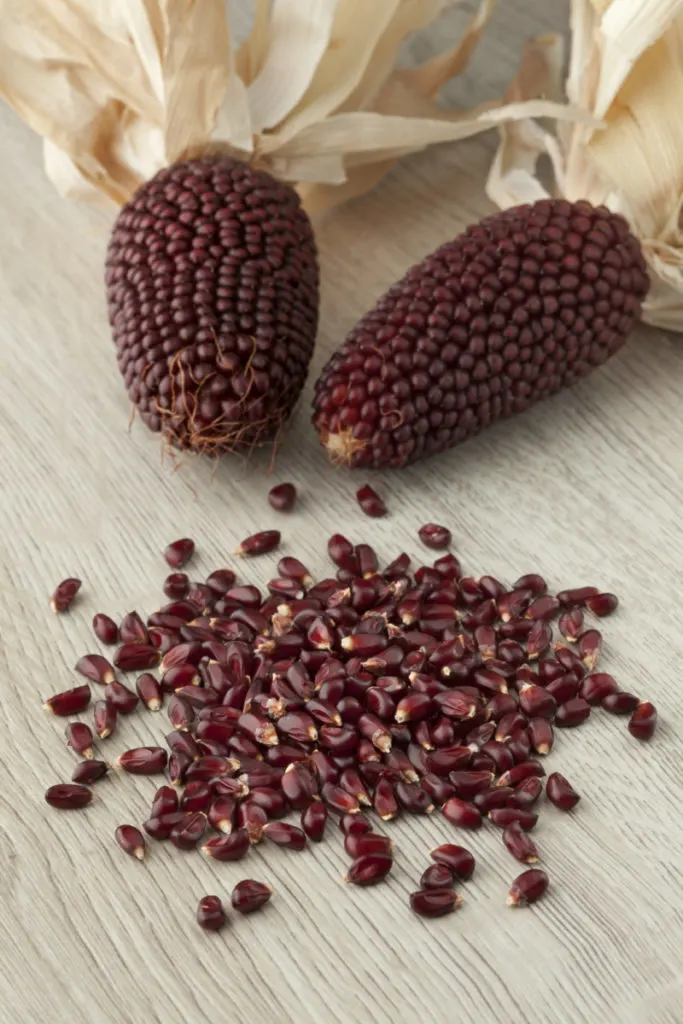
No, not the strawberry Jello popcorn.
Rather the tiny ears that look like ornamental strawberries.
Not only can they be used as fall decorations, you can pop them too.
Yes, you can even grow popcorn in raised beds as each stalk reaches just 4′ in height.
Find strawberry popcorn seeds for sowing at Baker Creek Heirloom Seeds.
Neon Pink Popcorn
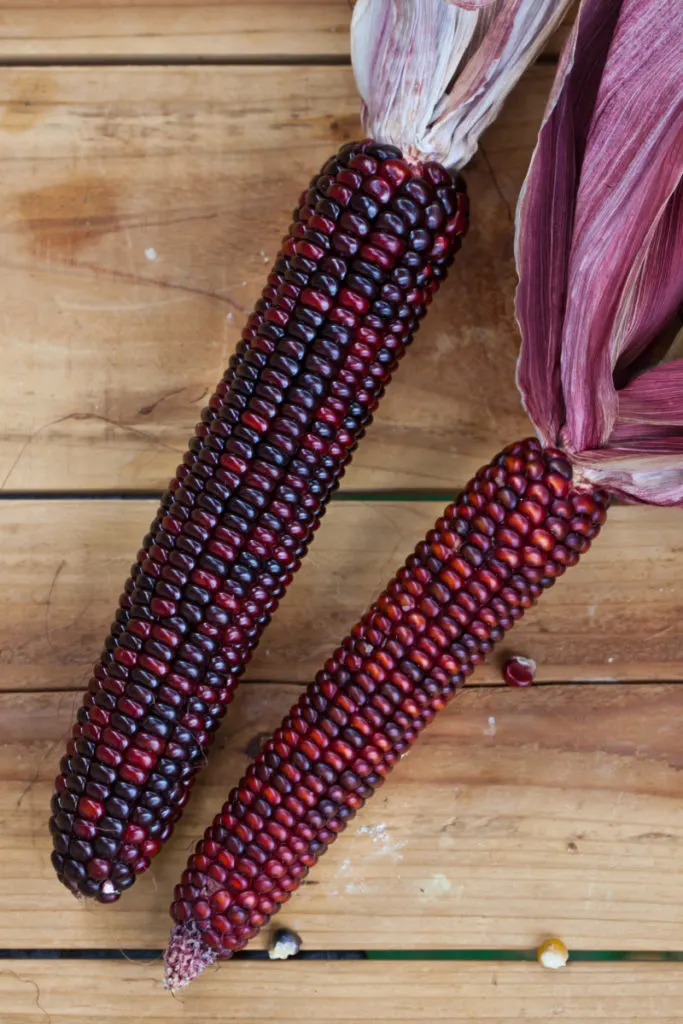
Neon Pink popcorn grows 4-5′ tall, with 2-3 ears on each stalk. The kernels are beautiful in varied shades of light and dark pink.
If you are looking to add some hidden color to your garden, pink popcorn is one way to go.
Seeds of this variety are often “out of stock”. Be sure to order them as soon as you get a chance.
Find Organic Neon Pink Popcorn seeds at Grow Organic.
Carousel Ornamental Popcorn
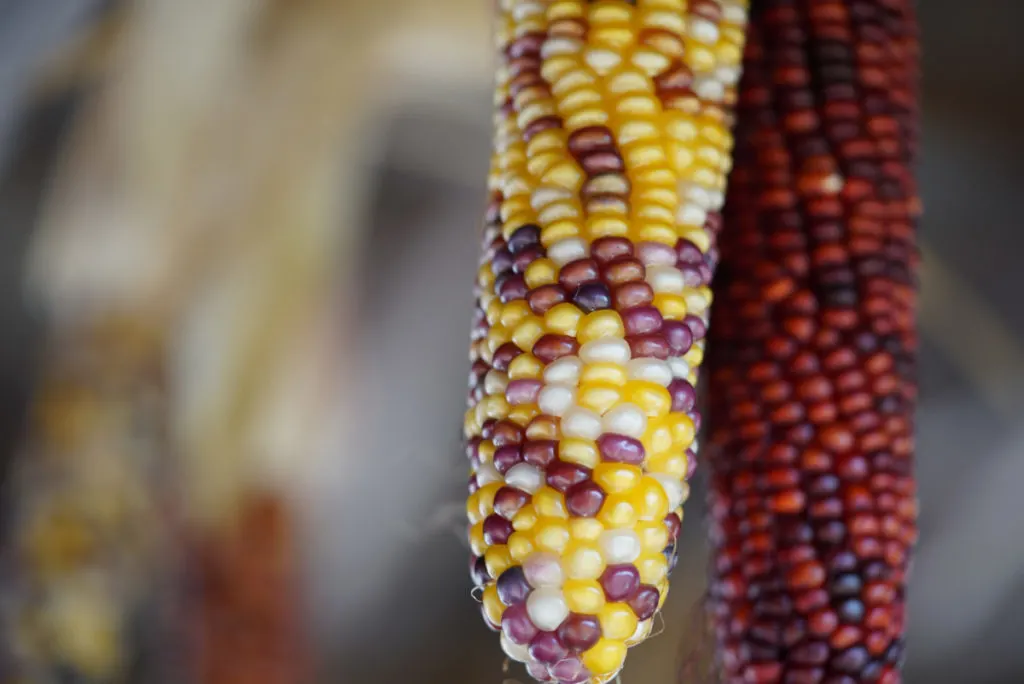
If long-season crops suit your climate, you may want to try your hand at growing Carousel popcorn. Color-wise you’ll find the variety you are looking for.
Some ears are dark purple, others are spotted yellow and orange, while others have white, purple and yellow kernels combined. They make a wonderful table decoration as is, or popped on the stove.
Stalks are a bit taller, reaching heights of 8′. The cobs are slightly larger as well, up to 5″ long.
The dried kernels can also be coarsely ground and made into a sweet cornmeal, or muffins. A versatile snacking corn to say the least.
Find Carousel Popcorn seeds at White Harvest Seed Company
Dakota Black Popcorn
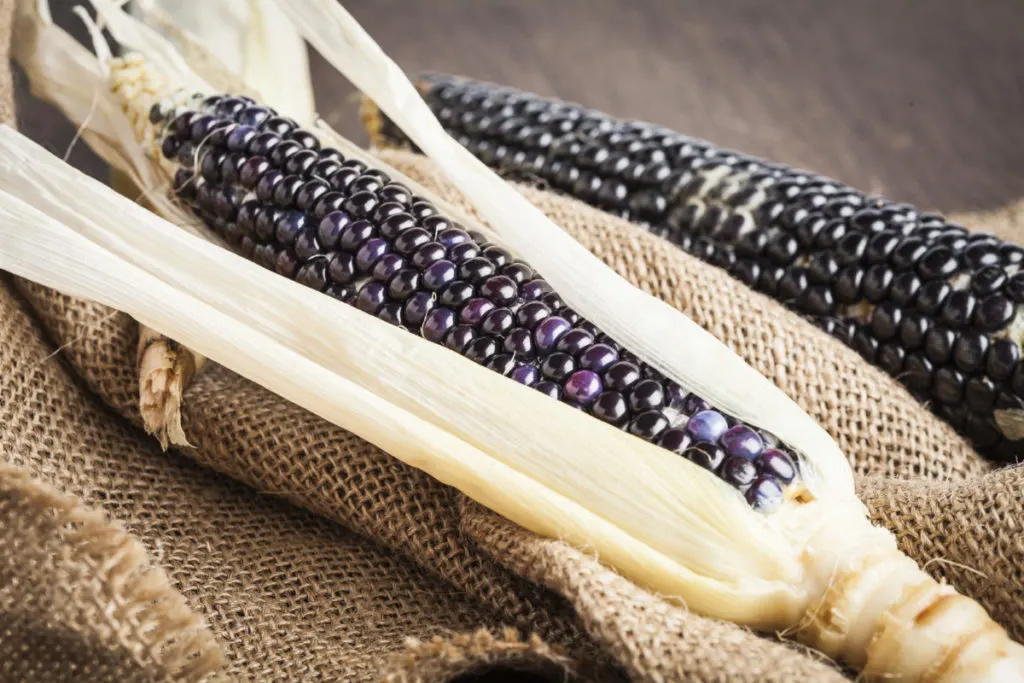
With almost black, shiny kernels, these ears are made for popping. And that’s just what they’ll do.
Grow them for looks alone, they are beautifully amazing.
Find Dakota Black Popcorn seeds at Rare Seeds.
Tom Thumb Popcorn
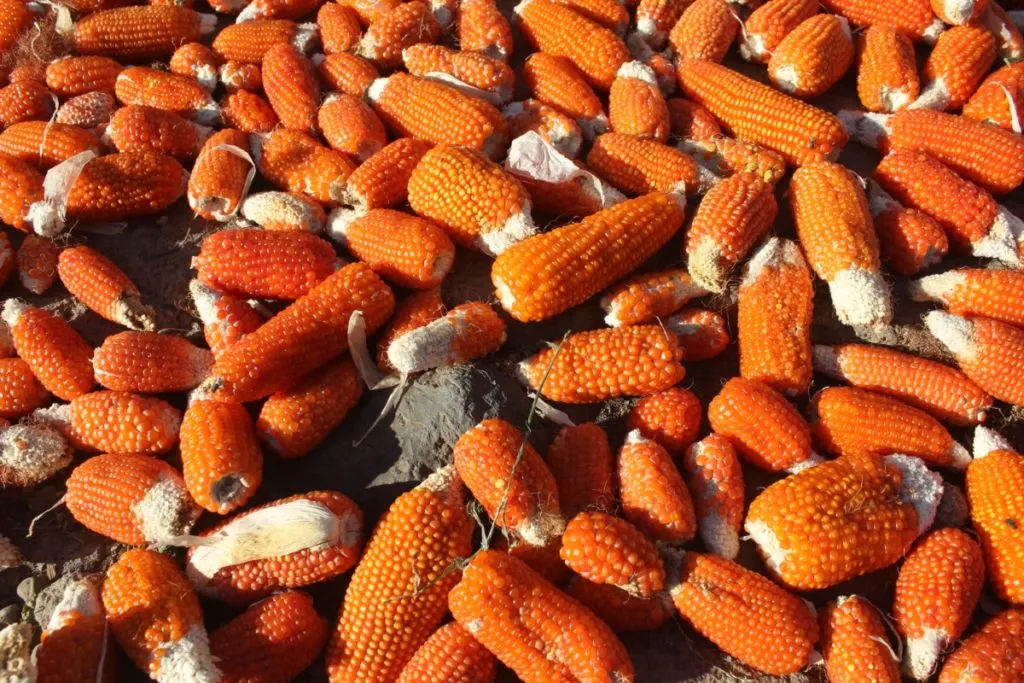
This is really the classic popcorn – dating back to the 1860’s. The small yellow kernels look as if they came from the store. But, you know they are far better than that.
They are short and sweet, growing only 3-4′ tall.
Best of all, they reach maturity in only 85-90 days, making it a not-so-long season crop.
If you can make space for them in your garden, you can find Tom Thumb popcorn seeds at Seed Savers Exchange.
Bear Paw Popcorn
People often share images of strange-shaped fruits and vegetables on social media. Maybe you can join in when your Bear Paw popcorn is ready to harvest.
Kernels are pearly white, on ears that are often flattened and split at one end. Unique? Crazy? Ready to try it?!
Find your Bear Paw popcorn seeds at Seed Savers Exchange.
How to Pop Homemade Popcorn
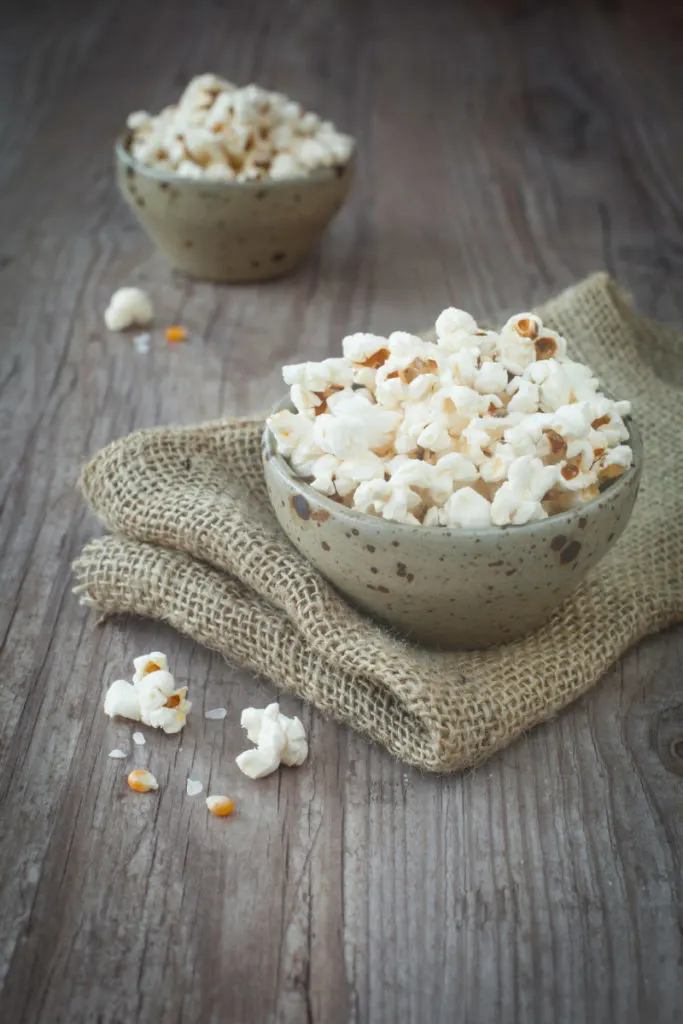
Our favorite way to pop popcorn is in a small stainless steel, long-handled pot, with lid, on our wood-fired stove. The fire has to be nice and hot to get every kernel to pop.
We first heat up the empty pan for a few minutes, add a tiny bit of home-rendered lard, then toss in enough kernels just to cover the bottom of the pot. Heat and shake every now and then until the lid starts to lift.
Transfer to a bowl, add a shake of salt and enjoy.
I know a lot of people recommend using coconut oil as an alternative option. The one time we tried this, it ignited in the pot before we had a chance to add kernels. Luckily it was winter and we could take it quickly outside in the snow.
In any case, use a high smoke point oil, such as canola or peanut. If your kernels are grown organically, be sure to honor them with organic oil as well.
How to know when it is done popping? Nobody likes burnt popcorn, so you’ll want to remove it before it is overdone.
When the popping slows to 1-2 seconds, remove it from the heat and immediately pour it in a bowl.
Finally, if you go through a ton of popcorn in your family, an air popper can’t be beat.
Toppings for Popping Corn
Salt and butter are a classic combo.
But melted butter and honey? That is an absolute dream! Add 2 tablespoons of butter plus 2-3 tablespoons of honey in a small pot and bring to a rapid boil. Stir frequently for 2-3 minutes, taking care not to burn yourself.
Drizzle over the popcorn. It’s pure yum.
You can also make homemade popcorn seasonings.
Chili powder and seaweed for an exotic treat.
Cinnamon and brown sugar for breakfast popcorn.
Drizzle with milk and white chocolate.
Experiment with Ranch popcorn flavor, taco, cheese, coconut curry or Mexican chocolate with a hint of cayenne.
Most of all, revel in the growing, harvesting, popping and devouring of your homegrown popcorn. After all, even gardeners need to snack too.

Get the famous Rural Sprout newsletter delivered to your inbox.
Including Sunday musings from our editor, Tracey, as well as “What’s Up Wednesday” our roundup of what’s in season and new article updates and alerts.

